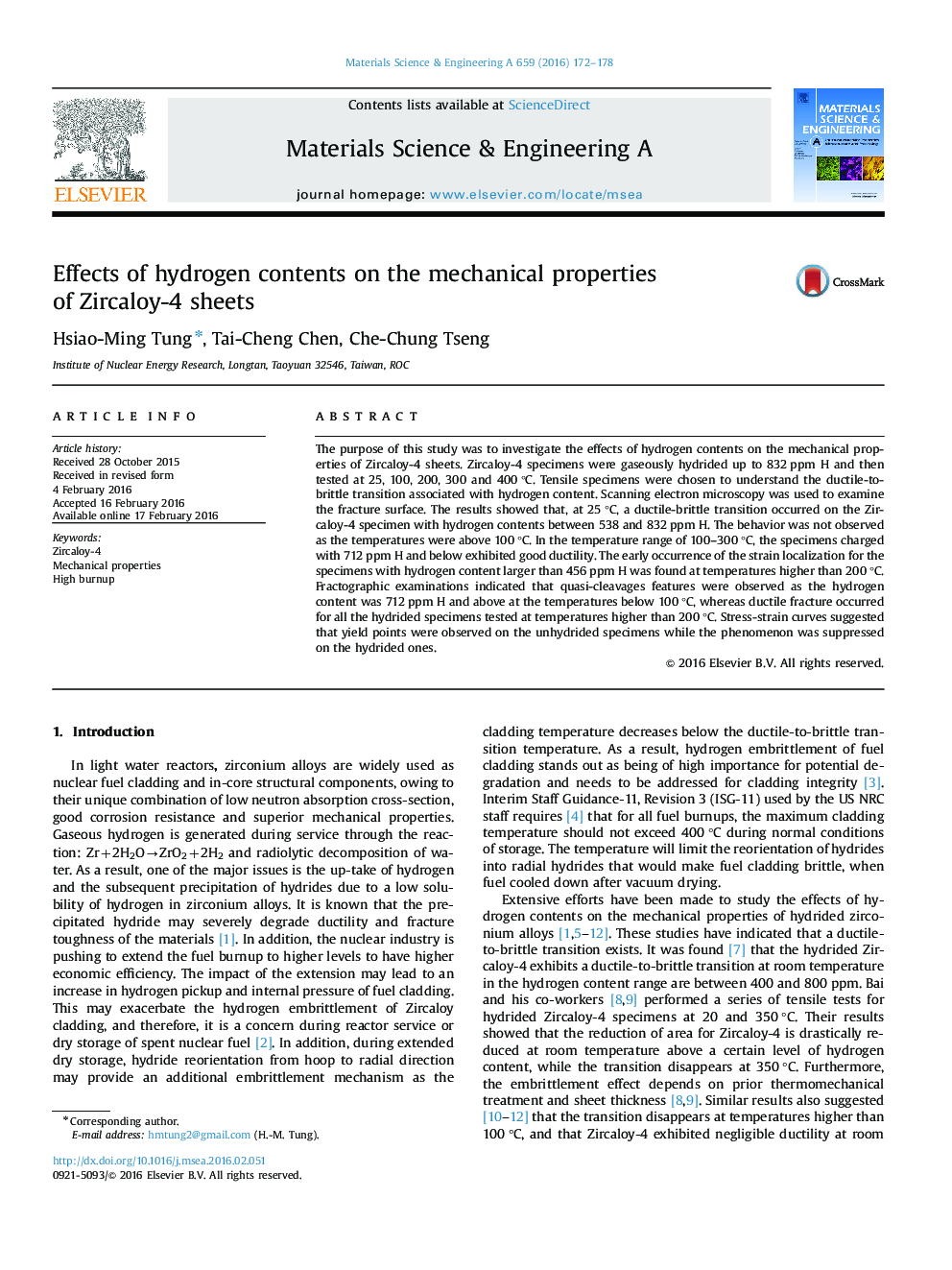| Article ID | Journal | Published Year | Pages | File Type |
|---|---|---|---|---|
| 1573548 | Materials Science and Engineering: A | 2016 | 7 Pages |
Abstract
The purpose of this study was to investigate the effects of hydrogen contents on the mechanical properties of Zircaloy-4 sheets. Zircaloy-4 specimens were gaseously hydrided up to 832 ppm H and then tested at 25, 100, 200, 300 and 400 °C. Tensile specimens were chosen to understand the ductile-to-brittle transition associated with hydrogen content. Scanning electron microscopy was used to examine the fracture surface. The results showed that, at 25 °C, a ductile-brittle transition occurred on the Zircaloy-4 specimen with hydrogen contents between 538 and 832 ppm H. The behavior was not observed as the temperatures were above 100 °C. In the temperature range of 100-300 °C, the specimens charged with 712 ppm H and below exhibited good ductility. The early occurrence of the strain localization for the specimens with hydrogen content larger than 456 ppm H was found at temperatures higher than 200 °C. Fractographic examinations indicated that quasi-cleavages features were observed as the hydrogen content was 712 ppm H and above at the temperatures below 100 °C, whereas ductile fracture occurred for all the hydrided specimens tested at temperatures higher than 200 °C. Stress-strain curves suggested that yield points were observed on the unhydrided specimens while the phenomenon was suppressed on the hydrided ones.
Related Topics
Physical Sciences and Engineering
Materials Science
Materials Science (General)
Authors
Hsiao-Ming Tung, Tai-Cheng Chen, Che-Chung Tseng,
